Working toward a safer Blue Line
August 29, 2013
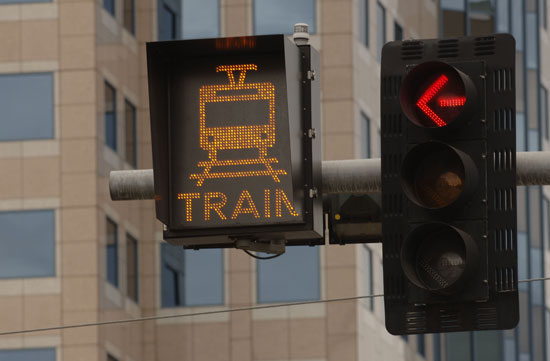
LED signs like this one in Long Beach alert pedestrians to stay off the tracks when a train is coming. Photos/Metro
One year after a task force convened to improve safety on Los Angeles Metro’s Blue Line, newly-released figures show that, while progress is being made, the line remains the deadliest in the system.
Abdul Zohbi, a system safety manager who organized the task force, says every fatality is reason for concern, but that he’s not ready to panic.
“All of our safety projects are being worked on as we speak,” Zohbi said.
Last July, officials discovered a spike in fatalities on the 22-mile light rail line from Downtown Los Angeles to Long Beach. It was on pace to experience the highest number of accidental fatalities and suicides of any year since it opened in 1990.
Acting on a motion by Supervisor Zev Yaroslavsky, Metro’s Board of Directors approved the creation of a Blue Line Task Force to find solutions for the agency’s oldest rail line.
“With our new lines, we are installing state-of-the-art devices that have come into existence in the past 20 years,” said Vijay Khawani, Metro’s executive officer of corporate safety. “A year ago we said, ‘Wait a minute, why can’t we retrofit the Blue Line?’”
Zohbi reached out to the City of Los Angeles’ Department of Transportation, the California Public Utilities Commission and Union Pacific Railroad, which runs a freight line directly alongside the Blue Line. He also invited representatives from Didi Hirsch Mental Health Services, a Culver City nonprofit organization that operates a 24-hour suicide crisis hotline.
The resulting recommendations were approved by the Board last December, and included $7.7 million for such physical improvements as pedestrian gates, bright LED signs and audible warning bell devices, although it has taken time for the measures to work their way through the bureacracy. Additional training is underway for light rail vehicle operators, including 2 days walking the line to experience the environment as pedestrians. And educational outreach to communities, another major part of the new safety program, has begun as well. “We expect the public to do their part in heeding the signs,” Zohbi said.
The outreach and training have already begun, and most of the physical improvements like the new LED signage are expected to be finished by around June of next year. But the improvements Zohbi believes will be most effective—108 new pedestrian gates—must be contracted out competitively, which will take longer.
In the meantime, safety issues continue to plague the Blue Line. According to statistics released Monday, it experienced more accidents and fatalities than all other Metro lines combined since the beginning of 2012, accounting for 56 of 77 accidents involving trains and pedestrians or cars during the period, along with 12 of 14 total fatalities.
“We need a physical barrier to stop people trying to cross the tracks illegally,” Zohbi said. “The No. 1 cause of accidental fatalities on the Blue Line is pedestrians running to catch a train. When you’re trying to save 30 seconds, you could lose your life.”
Tragically, even more deaths are intentional—half of the fatalities in 2012 and 75 percent of deaths so far this year were suicides. The task force called for suicide prevention signs with Didi Hirsch’s 24-hour hotline number to be installed at stations and other key locations. Those signs are 90 percent installed along the Blue Line. When that job is finished, they’ll be installed on the rest of the rail system.
Lyn Morris, who represented Didi Hirsch on the task force, said the signs represent “a big step ahead” by Metro.
“It wasn’t always popular to put the word ‘suicide’ on signs,” Morris said. “People like to talk around it, but when you are talking to someone who is suicidal you need to address it directly.”
The signs have only been in place for a couple of months, but Morris said her agency has already fielded calls generated by them, including some from people in a state of crisis. But beside that point-of-contact intervention, she said the signs serve a much broader purpose—spreading the word to communities across the county that someone is out there to listen and help at the most seemingly-hopeless times.
Both Morris and Bruce Shelburne, Metro’s rail operations chief, admitted that it’s next to impossible to eliminate all accidents resulting from people who break the law or attempt suicide.
“We are eating an elephant one bite at a time,” Shelburne said. “It’s a fine line—the safest train is one that doesn’t run at all.”
The Blue Line faces unique challenges. For one, it is Metro’s oldest rail line; the Teenage Mutant Ninja Turtles were used to promote its June, 1990, opening. And it runs through a densely populated part of town, with 103 at-grade crossings with other streets. Over the first 12 years of the line’s operation, it experienced more fatalities than any other line in the nation. In 1999, after a particularly rough year, Metro added safety measures that cut deaths by nearly half during the next decade.
While behavior of pedestrians and vehicular traffic can’t be predicted to a certainty, Zohbi called all fatalities “unnecessary.”
“To bring the fatalities down to zero,” he said, “that is our optimal goal.”
Posted 8/29/13
Where summer lingers after Labor Day
August 29, 2013

Lance Wichmann says he finds serenity on the Santa Monica sand when the crowds disappear in September.
Lance Wichmann’s playpen was a patch of warm sand at the foot of Ocean Park Boulevard. His family’s Santa Monica house was less than a block from the beach, and his mom started carrying him there before he could walk.
Today, more than seven decades later, you can still find Wichmann at that same spot, sunning himself in retirement, a few tentative steps from the shoreline home that remains in the family. He knows just about everything there is to know about beach life around lifeguard station 26, which draws some of the heaviest crowds in Southern California during June, July and August.
And one of the things Wichmann knows (besides the best body-surfing breaks) is this: although Labor Day on Monday represents the unofficial end of summer, it’s the beginning of a two-month-long, locals-only holiday, when ideal conditions come to the beach—but not the people. The truth is that, unlike other coastal areas throughout the nation, air and sea temperatures here drop an average of only a few degrees between Labor Day and Halloween.
“It’s so much quieter,” the 72-year-old former insurance executive said of LA.’s extended summer season of September and October. “I know Santa Monica is a tourist town, but I like it when I can come down here at low tide, when the kids are back in school, and walk along the sand by myself. To me, it’s spiritual.”
Let the rest of the country use Labor Day as its farewell to summer. Here in L.A., savvy beachgoers know that the occasion actually signals “the start of the beach season,” joked county lifeguard Captain Kyle Daniels, who oversees community services and youth programs. In September and October, he says, “the days are warmer, the winds are lighter and the views of Catalina are better.”
And the crowds are so much thinner that, after Labor Day, lifeguard stations are staffed every mile or more, rather than every 200 yards. “I don’t want to say it’s easy,” Daniels said of the workload that comes with reduced staffing levels. “But it’s less intense.”
There are other signs in the bureaucracy that, come this weekend, vacationers are about to vanish.
Carol Baker, a spokesperson for the Department of Beaches and Harbors, offered this post-Labor Day tidbit: the agency’s facilities and property maintenance division, which oversees beach restrooms, has just received its last major order of toilet paper and expects to use only 400 cases during the winter months, compared to as many as 1,000 cases during the summer.
When asked about her own favorite beach month, Baker declined to pick a favorite. “I know this will sound like a bubbly cheerleader, but every month at the beach is my favorite.” That said, she acknowledged that “some of the best summer days are in the fall.”
And that may be particularly true this year because of the fog that has shrouded the coastline during August—or, as Baker calls it, “Fogust.” This week saw some of the best weather of the summer, with the weekday visitor count already way down.
“In July, you could barely see the sand, there were so many people,” lifeguard Chris Smith said on a brilliant Tuesday afternoon as he kept watch over a couple of body boarders and surfers not far from where Wichmann was working on his tan. “The crowd is non-existent right now.”
“It’s a secret,” he added, “that the beach season is still going strong in October.”
Up along the bike path, meanwhile, business was slow enough at Perry’s café that chef Robin Hathaway could take a break to talk to a visitor about the post-Labor Day rhythms. “All the locals come down to reclaim their spots,” Hathaway said. “People have their routines. It’s more health and fitness oriented—running, riding, yoga, skate boarding, surfing.”
Of course, if the café had its way, she said with a wink, “summer would last forever.”
Posted 8/29/13
Historic fire’s legacy lives on
August 28, 2013

The Old Topanga Fire drove home the need for Super Scoopers. Topanga Messenger photo/Martin Nate Rawner
The first spark was sighted at 10:46 a.m. on the first Tuesday of November, 1993. It was hot. The Santa Anas were gusting. Fires had just consumed swaths of Altadena and Laguna Beach, and now came a 911 call to report a fire on Old Topanga Canyon Road, near the water tower. Minutes later, the smoke could be seen from a half-mile away.
Over the course of 10 days, the Old Topanga Fire would consume 16,516 acres, killing three people and injuring 21 others. Some residents will never forget the way it exploded through Malibu, hopping from canyon to canyon, cresting Saddle Peak in a 200-foot-long wall of flame.
But the fire also made another kind of history in Los Angeles County. In the wake of its devastation, the county became the first jurisdiction in California to begin regularly leasing the Canadian tanker planes known as “Super Scoopers”—a move for which firefighters were particularly grateful this week as a far-earlier-than-usual fire season hit Yosemite National Park, scorching a wilderness area the size of Chicago.
“The fires this year have been extreme,” says Los Angeles County Fire Chief Daryl Osby, citing the hundreds of fires that occurred this year throughout California. The Springs Fire struck in May, and then came June’s Powerhouse Fire, which destroyed more than 32,000 acres and some two dozen houses near Lake Hughes in a month that, in past years, has always been cool and foggy.
Lower-than-usual rainfall and a lack of June gloom, he says, have made the canyons as dry now as they usually are in autumn, when the Santa Ana winds typically turn L.A.’s canyons into fire hazards. Worse, the county hasn’t had a major fire since 2009, meaning that the county has mountains of parched vegetation to burn.
All of this, meanwhile, comes in the midst of a three-year drought that has disrupted conventional fire patterns. How much it all has to do with climate change is beyond his expertise, the chief says, but the upshot has been a new kind of fire season—bigger, earlier, less predictable and more lethal than ever.
“The Powerhouse Fire burned like it was September, and it wasn’t even being pushed by Santa Anas,” he says. “I can’t say yet whether this season is going to be the worst ever, but the potential is there.”
That, he says, is why the county moved up this year’s timeline by a full month for arrival of the Bombardier CL-415 Super Scoopers that it has leased for the past 19 years from the government of Quebec. Able to fly at speeds of up to 170 mph, the iconic yellow planes dip into oceans and lakes, pulling in 1,620 gallons of water in 12 seconds to dump from the air onto brushfires—a powerful tool for which canyon dwellers lobbied mightily after the 1993 fire.
“We’ve known since probably around February that we had the potential for a volatile fire season,” says Osby. “When we saw in June that the fuel moisture levels in our vegetation were already down to what we would normally see in September, we started collaborating with Quebec to see how early we could get the Super Scoopers.”
The planes arrived with their Canadian crews on August 15, as opposed to their usual start date in mid-September, and already they have been deployed on brushfires in Topanga and Calabasas.
“Your fire conditions in L.A. are worse than in the past years,” says Chief Pilot Carl Villeneuve, who expects to remain with the two leased planes until mid-December, if not longer. “Those two fires weren’t hard to put out because there are no big winds yet, but when the big winds come, that could change.”
Osby says the early Super Scooper deployment is just one part of a strategy to pre-empt a potentially lethal autumn. (The two planes were joined by an Erickson Air-Crane Helitanker, also contracted this year for extra backup.)
“We have also been aggressive with our fire prevention inspections, and in working with citizens to ensure proper brush clearance,” the fire chief says. “We provided additional training to our firefighters, getting them out to wild lands for practice. We did additional simulations with surrounding agencies, and intensified training with our incident management teams.”
The department has been urging the public to be vigilant, to become familiar with the department’s “Ready! Set! Go!” program and to evacuate when fire officials tell them to get out of a threatened area, rather than stick around to try to guard their houses.
“Our response capability is better now than it was 20 years ago,” Osby says. “We have additional aircraft, more sophisticated training and better weather predictions.”
Posted 8/28/13
A magic moment, even for Bowl pros
August 28, 2013

Sarah Horn, left, with Kristin Chenoweth after they shared their "a star is born" moment at the Bowl.
The people who work behind the scenes to produce one memorable concert after another at the Hollywood Bowl every summer might be forgiven for getting a little jaded.
This season alone, they’ve witnessed superstars ranging from Willie Nelson and Diana Ross to Yo-Yo Ma and Itzhak Perlman performing under the stars before tens of thousands of people.
So that makes what happened at the Bowl last Friday all the more remarkable.
A music teacher from Riverside named Sarah Horn, selected from the audience to sing a duet with Kristin Chenoweth, turned in a note-perfect performance of “For Good” from “Wicked” that did more than bring the Bowl audience to its feet. It also knocked the seasoned Bowl staff off theirs.
“All you could hear [backstage] was ‘Wow!’ Other than that, you could have heard a pin drop,” said Paul Geller, production director for the Bowl and the Los Angeles Philharmonic, which leases and operates the county-owned facility.
The Bowl team, along with the concert audience of 9,214, was the first to witness Horn’s performance, in which she harmonized fluidly and effortlessly traded solos with Broadway legend Chenoweth. But they weren’t the last. A friend’s video of their performance, posted to YouTube, had racked up more than 2.2 million hits as of Tuesday afternoon. Her own account of the evening was posted on Broadway World.com and the story has been picked up by media outlets ranging from the Huffington Post to the Hollywood Reporter.
“I was there and it was amazing,” said Chris Ayzoukian, the Philharmonic vice president who oversees the orchestra as well as productions at the Bowl and Disney Hall. “We see a lot of shows. Magic happens a lot at the Hollywood Bowl…but when something special happens, you just feel it in the air.”
As the second half of the concert got underway, Ayzoukian was attending to his usual performance night duties from Box 1041, texting staffers backstage with comments about audio and video quality.
Then Chenoweth selected Horn—who was attending the concert with friends and family—from among fans in the audience vying for a chance to sing onstage with her.
“Sarah sang literally the first note and we were like, ‘Hello. This is serious business,’ ” Ayzoukian recalled.
In short order, he stopped texting the backstage crew about technical issues and started sending messages like: “Wow, someone hire her immediately.”
Horn, of course, was living out a popular fantasy: who hasn’t daydreamed of belting out a show-stopping number before a spellbound audience? Then there was the undeniable tension inherent in the moment: would this unknown blow her big chance, forget the lyrics, sing out of tune?
No, no and no.
“I think part of it is the sense of surprise—this amazing singer who’s among us in the audience. She represented everyone in the audience that day,” Ayzoukian said. “That’s why it was so inspiring.”
(Inspiring, and so good that the questions started almost immediately: was Horn a plant? “Absolutely not,” the Philharmonic says.)
After the show, Geller, the production director, raced into the audience to get the voice teacher’s contact information and invite her backstage.
“Both she and her parents were fairly wide-eyed,” Geller said. “They knew that they were walking backstage at a world-famous venue.”
The crowd of VIPs clustered around Chenoweth’s dressing room—“all pretty high-powered people in the industry,” as Geller put it—gave her a welcome to remember.
“As soon as they saw her, they started chanting, ‘Sarah! Sarah!’ ” Geller said. “It was the most unbelievable experience.”
Geller, who has worked at the Bowl since 1970, has had his share of incredible moments over the years and this one, he said, is going on the list. “It was moving,” he said, “for all of us there.”
Meanwhile, Horn’s return engagement at the Bowl already has been booked. She’ll be serving as a guest judge of ABBA-Capella, a “show-tune-styled sing-off” contest among collegiate groups that is part of the Bowl’s ABBA Fest concert on Sunday, Sept. 8.
Posted 8/28/13
The 405′s teachable moment
August 22, 2013

Nearly one-third of Mirman School students now ride the bus, along with pupils from nearby Berkeley Hall.
It’s that time of year again, when parents and kids run around making sure they’ve got all those back-to-school essentials: backpack, glue sticks, highlighter pens, detour map…
In the 405 Project zone, the start of the school year comes with an extra dose of uncertainty as extended ramp closures, lane reductions and other traffic headaches can make tardy slips seem as inevitable as pop quizzes.
This year, as the long-running project heads into the homestretch, two major, months-long ramp closures are adding to the already challenging traffic patterns that accompany the first weeks of school.
At 10 p.m. tonight (Thursday, August 22), the eastbound Wilshire on-ramp to the northbound 405 Freeway will be closing for 90 days. The work is needed to complete the ambitious flyover ramps portion of the project, which is expected to make it safer and easier to enter and exit the freeway at Wilshire Boulevard. When finished, the new, longer on-ramp will be able to accommodate nearly three times as many vehicles.
At the same time, the Sunset Boulevard off-ramp of the northbound 405 is also closed until November in order to create a longer, wider ramp that can hold 60% more vehicles. (Detour information for both closures is here.)
Meanwhile, the Mulholland Bridge over the 405, under construction after being dismantled in two Carmageddons, is still down to one open lane in each direction, slowing the commute to and from numerous private schools located on Mulholland Drive.
It all adds up to a rolling real-life lesson in planning, coping and improvising. And, as strange as it may seem, some of the solutions to emerge are now so popular that they’re likely to outlast the project.
Like the shared busing program developed to transport Mirman School and Berkeley Hall students through the Mulholland maelstrom that the construction unleashed.
“We never had a bus. It never seemed like it was warranted,” said Jocelyn Balaban, the Mirman administrator who developed the program. “The 405 construction pushed it.”
Now, more than 100 children, nearly one-third of the student body, are riding the school’s small fleet of buses, she said.
“The kids love the bus,” she said, and so do parents happy to dispense with the stress of fighting traffic every morning. “One father said to me, ‘I’m a better parent because of this.’ ”
Robert Woolley, a former Mirman administrator who served as the institutional coordinator for the Mulholland Educational Corridor Association when the 405 Project first rolled out, said the construction required radical readjustments to family routines.
“When Carmageddon first happened, gosh, the first couple of weeks it took people an hour or an hour and a half to get to school because of reduced capacity on the bridge,” said Woolley, now the director of development for USC’s Dornsife College. “A lot of parents waited till the last minute to drop off their kids. People learned, but there were a couple of weeks when it was really rough.”
It didn’t help that Carmageddon—the weekend-long freeway closure to pull down half of the Mulholland Bridge—had finished early and without the dire traffic impact many had predicted. Some parents, he said, “got lulled into a false sense of security and then the first day of school hit—BAM!”
After that, carpooling and busing really took off.
Those tactics also have proven popular at the Brentwood School off Sunset Boulevard, where they’re approaching the first day of school Tuesday with cautious optimism about traffic—despite the ramp closures.
“I think we’ve navigated the major closures to date pretty well,” said Shirley Blake, the schools’ director of communications.
The school’s other coping strategies include scheduling parent meetings and school events at non-peak traffic times and having faculty and staff arrive for work before 7:30 a.m. Students who drive themselves to school are required to travel in carpools and also arrive before 7:30 a.m. That policy predates the project but “it has certainly helped and I think it’s increased,” Blake said.
“We are just rolling with the punches,” she added.
Cori Solomon, president of the Brentwood Glen Association, is also used to rolling with the punches but she’s nervous about what the beginning of this school year will bring to her neighborhood. “Even though it’s old hat, I definitely have apprehension” about the simultaneous ramp closures, Solomon said. The Sunset ramp closure, which started August 3, “hasn’t been too bad—but school has been out.”
UCLA, which is “really the 800-pound gorilla,” starts Sept. 23.
By this time next year, the project—with its ramp and bridge improvements and new, 10-mile northbound carpool lane—is expected to be finished. With three back-to-school seasons under their belts, project officials are approaching the fourth with an array of mitigation measures.
A new, three-lane northbound on-ramp to the freeway from Santa Monica Boulevard reopened this week, just in time to serve as an alternative for motorists stymied by the Wilshire on-ramp closure.
Officials also are doubling the number of traffic control officers—from 12 to 24—at intersections in the area.
“Those will remain in place all next week as schools go back,” said Kasey Shuda, construction relations manager for the project. She said that officers will continue to be stationed at “prime locations” even after the back-to-school rush subsides.
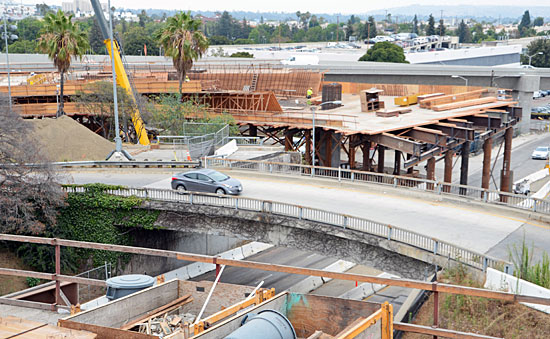
The current northbound on-ramp from eastbound Wilshire, shown at center, will be demolished. Photo/Metro
Posted 8/22/13
Feeling the burn at the Bowl
August 21, 2013
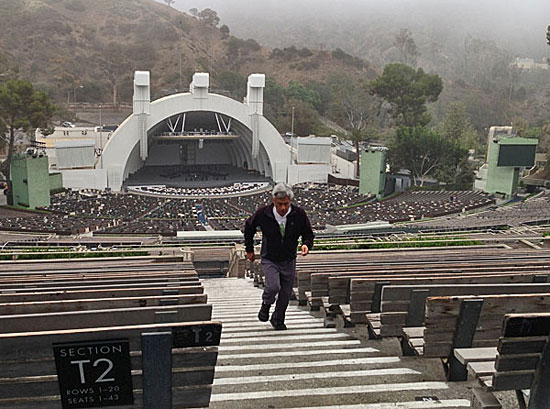
Robert Almodovar loves the Hollywood Bowl both for its music and for the workout he gets on the stairs.
By night, the steps of the Hollywood Bowl fill with music lovers, filing into their seats with picnics, popcorn and wine. Come sunup, however, a whole other crowd hits the house—locals like Robert Almodovar, for whom the Bowl is not just a world-renowned concert shell but also Los Angeles’ most iconic Stairmaster.
“It’s a beautiful place and I live just up the street,” panted the 61-year-old actor, smiling as he jogged uphill between the Garden Level boxes and the cheap seats on Tuesday morning. “I know all the guys who work here. I’ve been coming for years.”
Almodovar is among thousands of Angelenos who use the Bowl for recreation and fitness—a side attraction that stems from the fact that, when the Bowl isn’t serving as one of L.A.’s best-loved cultural destinations, it’s a Los Angeles County regional park.
“We get close to a million visitors coming by the park in the off-season and when we’re not having concerts,” said Gail Samuels, chief operating officer for the Los Angeles Philharmonic, which operates the Bowl under a lease with the county. Some of them picnic, she said. Some meditate. Some wander in during the summer for kids’ programs, or to quietly eavesdrop on open rehearsals. But for neighbors, the Bowl’s cardio benefits are an undeniable attraction.
“People walk the stairs, people walk the hillside,” said Samuels. “It’s a pretty steep grade, and definitely a good workout.”
“Every day, you see runners here,” agreed Bowl operations director Christine Whitman, strolling the foggy amphitheater as Almodovar worked out in the distance. Onstage, crews behind her toted chairs and music stands for Itzhak Perlman’s rehearsal later in the morning with the L.A. Phil.
“People come first thing in the morning when the gates open, and after work in the evening. When school is in session, the kids come up from Hollywood High School.”
Personal trainers meet clients at the Bowl. Local bloggers discover and rediscover the stairs there. This weekend, a fitness event there for Los Angeles County employees is expected to draw several hundred office workers for a power walk and choreographed dance workout.
As the nation’s largest natural amphitheater, Whitman said, it’s a natural athletic challenge: “From the Pool Circle to the back of the house, it’s 450 linear feet with a hundred-foot rise, so you can imagine how that would make your heart race.”
The Bowl and its grounds are free and open to the public from sunrise to sunset daily, except during closed rehearsals and after about 3 p.m. on concert nights. Parking is also free during the Bowl’s off-hours. Because the musicians prefer not to be distracted, the stairs are closed to runners during summer rehearsals, which typically run from 9:30 a.m. to 12:30 p.m.
“But otherwise, people can be there all day,” Whitman said.
It’s a fact that not all Angelenos are aware of. While exercisers jam public stairways in Santa Monica, Silver Lake, Rustic Canyon and other hilly parts of the city, only the bolder—and better informed—fitness buffs tend to brave the climb at the Bowl.
“We weren’t sure if it was OK to be here, but we thought we’d just keep walking until we got yelled at,” John Justice Parker, a 26-year-old songwriter, actor and newcomer to Los Angeles, confessed Monday evening as he and three friends made the long trek from the bottom to the top of Aisle 3, their calves burning.
“But we’re a pretty single-minded group and we wanted to conquer the mountain.”
“Also we wanted to get a picture from the top,” added Brandon Blouin, his out-of-town friend.
Almodovar applauds their effort. He has honed his own workout to maximize the Bowl’s assets.
“I do a stretching routine to work on all the aches and pains,” he said. “Then I do sit-ups. Then I start a very sloooow, old-man jog through the Bowl, all the way to the picnic area at the top. Then I come down and do the stairs.”
All in all, he says, it takes him about an hour and 20 minutes. But his work demands that he stay in shape. Along with TV and film roles, he does theater and is a familiar face in commercials for tires, credit cards and restaurants.
“I’ve been here every day for the last two weeks, except for one day when I had an audition,” said Almodovar, giving himself a personal high-five as he finished his run and the morning fog gave way to sunshine.
“Wooh! This is what we love about exercise, isn’t it? I’m awake!”
And all before the first note of the day sounded on the legendary Bowl stage.
Posted 8/21/13
In this soccer saga, everybody wins
August 15, 2013
His field of dreams had turned into a battlefield.
In March of 2012, residents of northeast San Fernando Valley gathered to oppose plans for two new soccer fields at El Cariso Community Regional Park. It was a sudden and unexpected development during the final stretch of an $11.4 million park-wide renovation project. But James McCarthy didn’t panic. He’d been down this path before as a facilities planner for the Los Angeles County Department of Parks and Recreation.
“When you’re younger, it’s a surprise,” McCarthy said. “When you’ve done this for 25 years, you just hope it doesn’t happen on your project.”
The original plan required the removal of more than 70 eucalyptus trees, which drew the ire of homeowners, the local Chamber of Commerce and other members of the community. They were also concerned about parking, especially on weekends. The critics joined forces, organizing a meeting at Los Angeles Mission College last March. Emotions ran high, and the mood of the meeting quickly turned to anger. Supervisor Zev Yaroslavsky’s office intervened, creating a community advisory group to meet regularly with county representatives to discuss alternatives.
Those sessions weren’t always a walk in the park. But four months later, last July, plans were finally approved by the group to relocate the soccer fields so only two trees would need to be removed.
“There was a lot of heated discussion at that first meeting and subsequent meetings,” said Irene Galvan, a 37-year Sylmar resident and one of the advisory group members who supported the original plan. “County staff listened and made modifications,” she said. “I think people were okay with it after that.”
Opponents of the initial plan, including Benjamin C. Williams, president of the Sylmar Homeowners Association, said they were converted during the inclusive process. He called the final product “perfect.”
“We are in harmony with the plans,” he said, “because we were a part of making them.”
This weekend, a long awaited groundbreaking ceremony for the fields will take place, representing the final gem in the remaking of El Cariso Park. Already completed are a renovation of the park’s swimming pool and a brand new 15,000-square-foot community center and gymnasium. A universal-access park modeled after Shane’s Inspiration in Griffith Park is expected to be completed sometime next spring, giving kids of all ability levels something to shout about.
As far as soccer goes, children from the community are getting a state-of-the-art upgrade from the makeshift dirt field where they now kick the ball around. One field, regulation-sized, will have an artificial playing surface, shaded bleachers and a concession stand. Beside it, a smaller, natural grass field will be built for pick-up games and youth leagues.
There’ll also be plenty of organized activity, said Sandra Chapman, who is responsible for programming at El Cariso Park. She plans to create two official leagues—one for youth and one for adults—along with a youth soccer clinic. Community groups and teams will also be able to reserve the fields, which also can be used for football games. It all adds up to a lot more work for Chapman, who’s hoping for a little help from her friends.
“The community is very connected to us, so where we need volunteers, we got ‘em,” Chapman said.
The fields should be ready for use by late next summer, said Sam Shadab, project manager for the county Department of Public Works. Shadab managed the other park improvements, too, and he said he has no doubt the public will fully embrace the fields when they’re built.
“I have been hearing a lot of praise about the gymnasium—people say it’s the best in the county,” said Shadab. “We are going to continue that tradition of success through this project.”
For McCarthy, who’s been overseeing all this, the fields represent the completion of more than a decade of work. “It’s a great relief,” he said. “Everything is new now. There is just a greater play opportunity across the board.”
Posted 8/15/13
Review ordered of rehab rip-offs
August 14, 2013

An investigative series that revealed corruption in the rehab industry has prompted state and county probes.
Faced with reports of rampant fraud in California’s taxpayer-funded alcohol and drug programs for the poor, the Board of Supervisors on Tuesday ordered an examination of whether “regulatory conflict and confusion” between the state and county may have opened the door to unscrupulous operators.
The board’s action, based on a motion by Supervisor Zev Yaroslavsky, comes in the wake of a year-long investigation by CNN and the Center for Investigative Reporting, which found that during the past two fiscal years in California, $94 million in public funds had been paid to clinics showing “signs of deception or questionable billing.”
Among other things, the “Rehab Racket” series revealed that clinics allegedly submitted bills for fake clients, paid people to sign up for treatment that would be reimbursed by taxpayers and pressured staffers to forge paperwork.
The Drug Medi-Cal program—now the target of a state investigation—is funded through federal and state monies that, in Los Angeles County, are mostly controlled by the Public Health Department’s Substance Abuse Prevention and Control division. The program is jointly administered by the state and county.
During the last fiscal year, L.A. County contracted with 143 providers serving 30,000 clients. Earlier this month, as part of the state’s renewed scrutiny of the Drug Medi-Cal program, funding was cut to nearly 50 agencies statewide that had been suspended from doing business, many of them in Los Angeles County, home to the largest number of these treatment clinics.
Yaroslavsky’s motion aims to sort out the shifting and unclear responsibilities between the state and county that for years have plagued administration and oversight of the program, which is expected to grow as more individuals qualify for Medi-Cal under federal health care reform.
“It is simply unacceptable for a program of such financial magnitude and critical importance to the public’s health to be undermined by bureaucratic confusion and left vulnerable to scammers,” Yaroslavsky said after Tuesday’s board meeting.
To that end, Yaroslavsky’s motion directs the auditor-controller and county counsel to determine, among other things, the county’s legal authority to audit and terminate contracts with Drug Medi-Cal providers, as well provide an analysis of the state’s responsibilities. The board also approved an amendment by Supervisor Mark Ridley-Thomas ordering the public health department and county lawyers to create a plan that helps patients avoid harmful disruptions in their care as the result of recent clinic suspensions.
Posted 8/14/13
Where CBS blackout hits home
August 14, 2013
In the weeks since Time Warner Cable and CBS began feuding, Leadora Sutton has been having technical difficulties in her daily life.
“My main show is ’60 Minutes’ and I miss it terribly,” complains Sutton, 84, whose Westside senior apartment house—like much of Los Angeles—is served by Time Warner. “And I can’t get ‘Family Feud’, which I like to watch at 6 o’clock as I eat dinner. It’s a silly show, but I relax with it. And now it’s gone because we can’t get Channel 9.”
Sutton isn’t the only cable customer who wishes her regularly scheduled programming would resume already. As the ongoing contract dispute between the two media behemoths entered its third week and federal officials fired off letters urging the companies to settle their differences, some 3 million customers this week remained caught in the middle of the argument over their distribution deal.
Lots of folks are annoyed, but nowhere is the aggravation more pronounced than among seniors, who’ve long been the network’s most loyal fans. Their screen-happy kids and grandkids may not miss it so much, what with their binge-watching back episodes of “Breaking Bad” on Netflix, or getting their comedy fix via YouTube on their phones. But for this crowd, losing CBS—with the most mature audience of the four major networks and an average viewer age of almost 57—is like losing an old friend.
“TV is an amazing issue with seniors,” says Doug Cope, director of operations for the Menorah Housing Foundation, which oversees 18 low-income apartment buildings for seniors throughout Los Angeles County, including Sutton’s. “If people start missing their programs,” he says, “you hear from them.”
Since August 2, Time Warner has been blocking out CBS in a standoff over how much the cable giant will pay the network to carry CBS-owned stations in Los Angeles, New York and Dallas. For subscribers here, that has meant not only the absence of popular shows such as “60 Minutes”, “NCIS” and “The Big Bang Theory,” but also the blackout of CBS-owned stations such as Showtime and KCAL Channel 9, which—crucially, in this winning season—airs the Los Angeles Dodgers.
“It’s not a life-or-death thing for the people I’ve heard from,” jokes Robert Miret, manager of the Zev Yaroslavsky Apartments where Sutton lives near Westwood. But, he notes, he is part of another contingent that is increasingly resenting the blackout—sports fans. “So for me . . . “
Miret was among thousands this month who missed the Dodgers game against the St. Louis Cardinals because KCAL was dark on his home television. The blackout continued this week as the Dodgers played the New York Mets—again, only for non-Time Warner viewers. And, Miret notes, football season is about to begin.
For his tenants, however, the irritation has more to do with the interruption of daily habits. Though the complex also offers satellite dish and basic antenna hookups, many of the tenants have chosen the option they’re most used to, which is cable. And, he notes, many can’t switch because the basic antenna hookup is only for high-definition TV, and most of the tenants own older models.
So they’re stuck, he says, and even those who own computers don’t see television the way their grandchildren see it, as just one screen among many. For their generation, and even for many of their children, TV is also a marker of time and a companion. And retirees tend to watch a lot of it.
“Sometimes I’m not out of the house until three or four in the afternoon, now that I’m not working, and as I’m making lunch, I like to watch the shows,” says 67-year-old Sandy Tenenbaum. “I watch ‘The Talk’, which is very interesting. I watch ‘The Doctors’, which is a very informative and educational. I watch ‘Dr. Phil.’ At seven o’clock I watch that ‘Insider’ gossip show with the celebrities.”
Sutton, whose TV now displays Time Warner’s negotiating position when she turns to her favorite channel, says she is making do with other shows while her cable company and her favorite network do battle.
“They’ll fight it out and it’ll be settled in a few weeks,” she predicts. (Meanwhile, CBS has stayed on top of its rivals in the ratings, blackout notwithstanding.)
But without her shows to divert her, Sutton says, she made a call the other day to Time Warner, and came away with an interesting tidbit—confirmed this week by sales representatives at the company’s online support center.
“Did you know,” she asks, “that I can get discounts on my utility bills, my phone bills, even my movie tickets, but my cable company doesn’t give a break to senior citizens?”
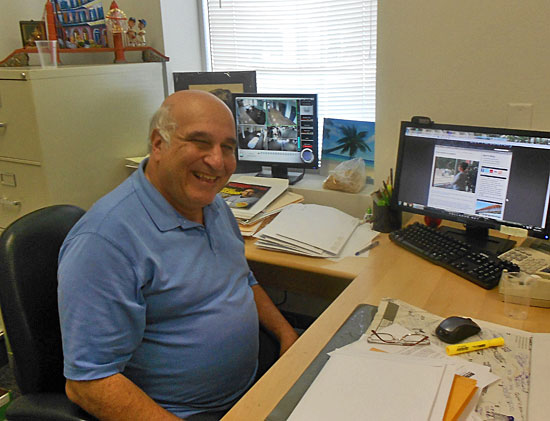
Bob Miret’s fingers are crossed that the blackout will be over in time for football season, in a few weeks.
Posted 8/14/13




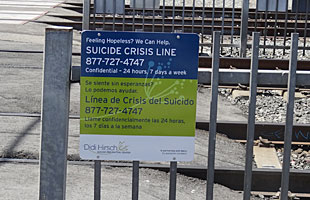

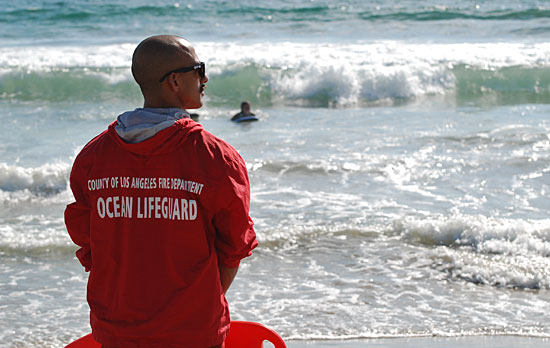
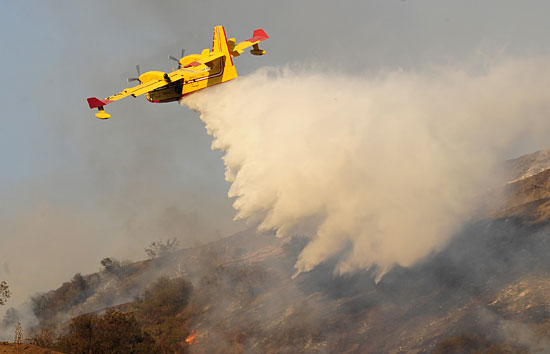

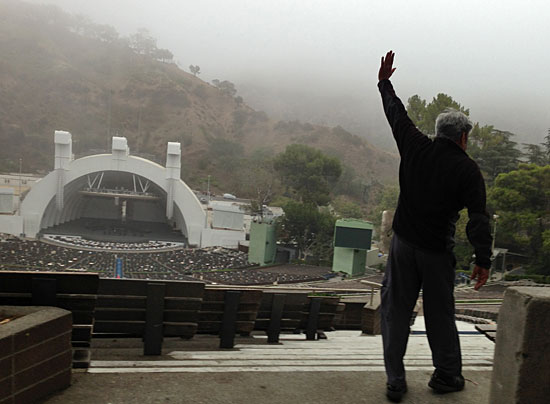
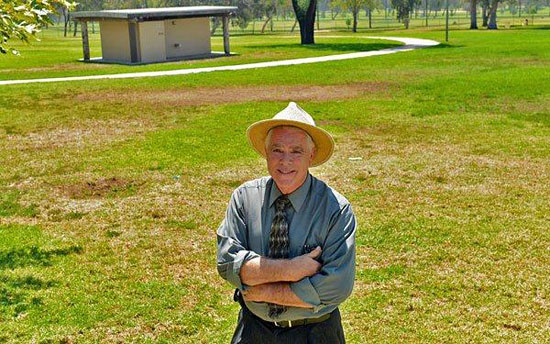
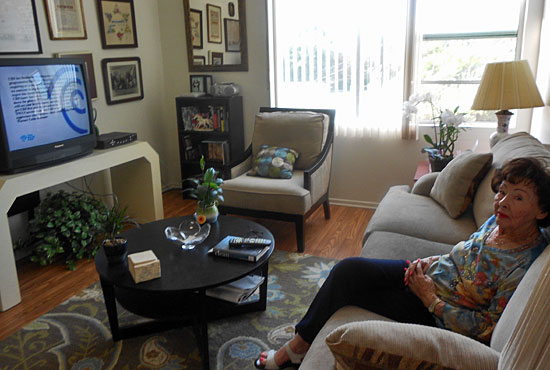





 Check for the latest closure information
Check for the latest closure information








